Lotte Duty Free (Casa Central) (롯데면세점 (본점))
8.1Km 2025-08-04
Eulji-ro 30, Jung-gu, Seúl.
The Westin Josun Seoul (웨스틴 조선 서울)
8.1Km 2025-07-18
106, Sogong-ro, Jung-gu, Seoul
Lotte Hotel Seoul (롯데호텔서울)
8.2Km 2025-10-23
30, Eulji-ro, Jung-gu, Seoul
Parque Tapgol (탑골공원)
8.2Km 2021-12-30
Jong-ro 99, Jongno-gu, Seúl
+82-2-731-0534
También conocido como Parque Pagoda, el Parque Tapgol, localizado al lado del templo Weongaksa de la era Joseon, es el primer parque moderno construido en Seúl. El remplo Weongaksa era conocido como templo Heungboksa durante la dinastía Goryeo, pero fue renombrado cuando fue ampliado durante los inicios de la era Joseon. Sin embargo, fue destruido durante el reinado de Yeonsangun y Jungjong debido a la fuerte política de represión hacia el budismo. Más adelante, un parque occidental fue contruido a propuesta del inglés John Mcleavy Brown, pero no hay información precisa sobre la razón y la fecha. El parque contiene varios tesoros nacionales, incluidas la placa que conmemora el movimiento independentista Wongaksaji y la estatua de Byeong-hee. El parque es de gran valor histórico y un espíritu nacional al ser el punto de inicio de la Protesta de Independencia del 1° de mayo de 1919.
Chanyangjip (찬양집)
8.2Km 2025-07-18
5, Donhwamun-ro 11da-gil, Jongno-gu, Seoul
Centro de Arte de Goyang Oulim Nuri (고양어울림누리)
8.2Km 2021-03-15
Eoullim-ro 33, Deogyang-gu, Goyang-si, Gyeonggi-do.
+82-1577-7766
El Centro de Arte de Goyang
Oulim Nuri es un complejo cultural y artístico que reúne todas las
instalaciones de entretenimiento y deportivo en un solo lugar, escenarios de
espectáculo de todas las dimensiones con las últimas instalaciones
tecnológicas, centro para las actividades culturales, museo de arte, estadio
deportivo, gimnasio, pista de patinaje sobre hielo, piscina de natación, etc.,
entre otros lugares que llevan un nombre tradicional en coreano. En particular,
la ciudad de Goyang presenta una condición natural óptima, en donde de noche el
cielo se cubre de estrellas y el ambiente tiene un aire puro y limpio.
Tiendas Departamentales Lotte (Casa Central) (롯데백화점 본점)
8.2Km 2024-05-17
Namdaemun-ro 81, Jung-gu, Seúl.
Museo Heo Jun (허준박물관)
8.2Km 2021-08-25
Heojun-ro 87, Gangseo-gu, Seúl.
+82-2-3661-8686
Siendo el primer museo de medicina oriental del país, fue inaugurado el 23 de marzo del 2005. En el piso 1 se encuentran la oficina de administración y otras instalaciones anexas, y en el piso 2 están la tienda de suvenires, la sala audiovisual y el sector de descanso. La mayoría de las piezas destinadas a la exposición están en el piso 3, la sala conmemorativa de Heo Jun, la sala de exhibición de hierbas y medicamentos orientales, la sala de equipos y maquinarias médicas, el área de experimentación médica y las reproducciones de escenas médicas de la Corte Real. En el área de experimentación tendrá la oportunidad de participar en las actividades académicas, envolver los fármacos, realizar consultas médicas para conocer su estado físico, preparar medicamentos, medir la presión y la grasa corporal, etc.
Heo Jun
Personaje de gran importancia en la historia médica de Corea, que corresponde al período comprendido entre 1539 (reinado de Jungjong) y 1615 (reinado de Gwanghaegun). Nieto de Heo Gon, alto funcionario público de la época de Joseon, e hijo del guerrero nacional Heo Ron, nació en la aldea Baekseok, de Neunggok-dong, Paneung-ri, Yangchyeon-hyeon, Gyeonggi-do (actualmente: Deungchon 2-dong, Gangseo-gu de Seúl). Fue el médico más importante de Joseon, que por su conocimiento y técnica de medicina, es considerado hasta hoy en día el mejor profesional de su campo de la historia coreana. También fue quien sistematizó la medicina oriental en el libro Dongui Bogam.
Puerta Sungnyemun (Puerta Namdaemun) (숭례문)
8.3Km 2025-05-23
Sejong-daero 40, Jung-gu, Seúl
La puerta Namdaemun, cuyo nombre oficial es Sungnyemun, es un Tesoro Nacional de Corea. Tiene una entrada con forma de arco en el centro de una plataforma levantada de piedras. Sobre la misma, se elevan los pilares y el techo dividiendo al portal en nivel superior e inferior. En los laterales Este y Oeste, tiene abiertas puertas para entrar y salir.
El césped verde que rodea a la plataforma muestra las huellas de una antigua fortaleza. Cuando el monarca fundador de la dinastía Joseon, Lee Seong-Gye (que reinó de 1335 a 1408), hizo construir la ciudad capital, creía que en caso de incendio, el fuego alcanzaría el palacio Gyeongbokgung como así también el interior de la capital porque el monte Gwanaksan de Seúl tiene la figura del fuego de acuerdo a los principios de geománticos del “feng-shui”. Por ello, el letrero de la puerta Sungnyemun fue escrito en sentido vertical para proteger a la ciudad del incendio, porque los caracteres chinos escritos en forma horizontal se semejan a la imagen del fuego. La ideografía del letrero de Sungnyemun es solemne, elegante y llena de fuerza, pero a la vez, prolija.
La ideografía es famosa por ser de puño y letra del príncipe Yangnyeongdaegun (que reinó de 1394 a 1462), el primogénito de Taejong (1367-1422) de la dinastía Joseon. Por las noches, las luces de las lámparas de mercurio ubicadas debajo de la puerta añaden más belleza a su estética natural.
Tiendas Departamentales Lotte (Sucursal de Avenuel) (롯데백화점 본점 에비뉴엘)
8.3Km 2024-02-20
Namdaemun-ro 73, Jung-gu, Seúl.
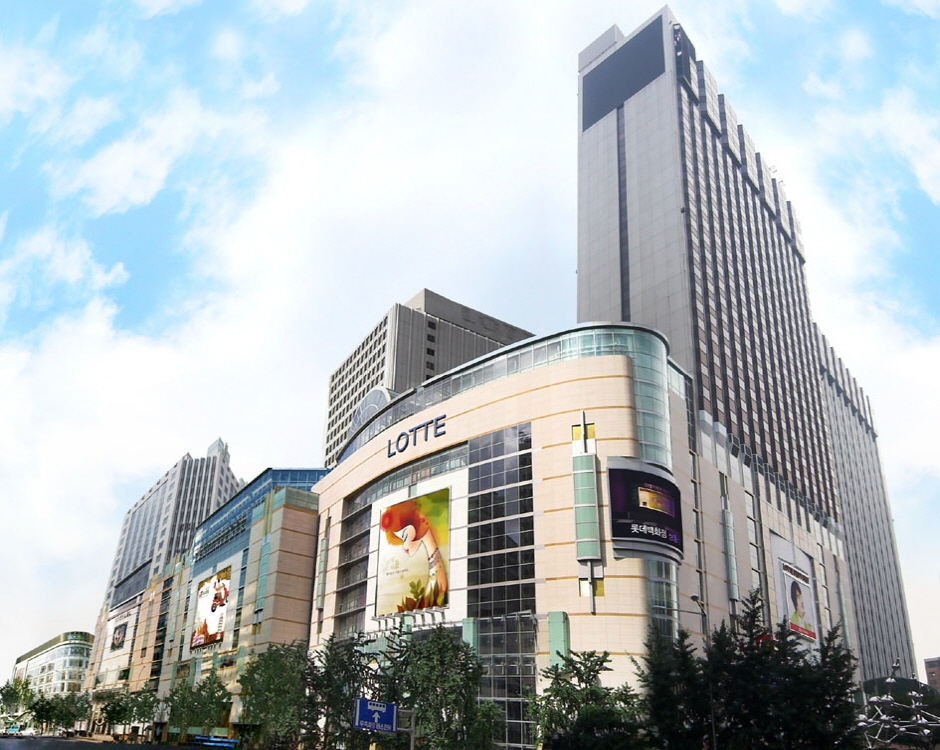
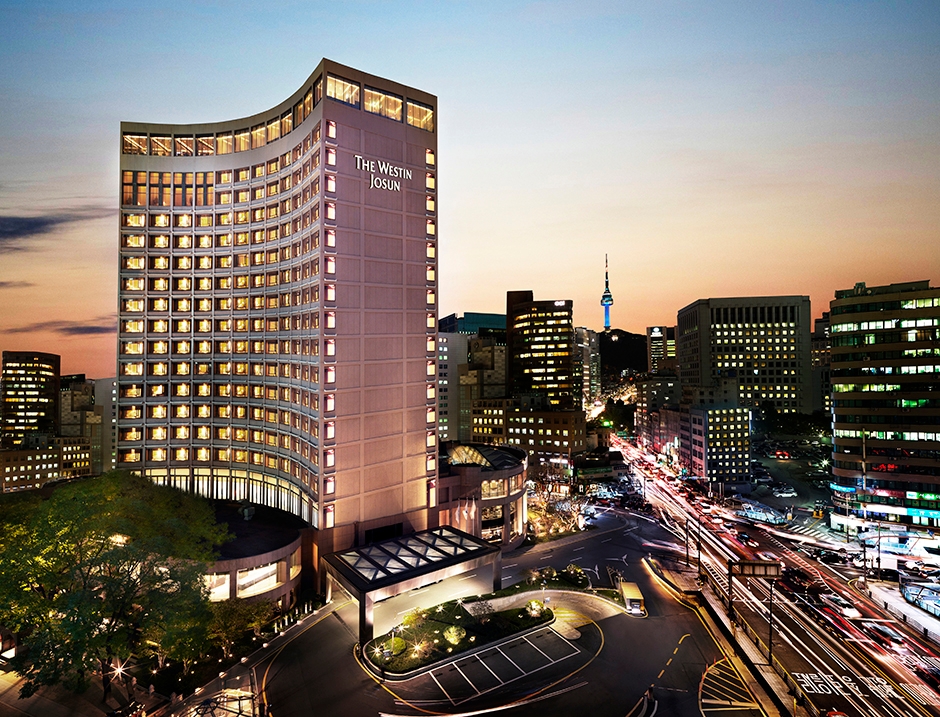
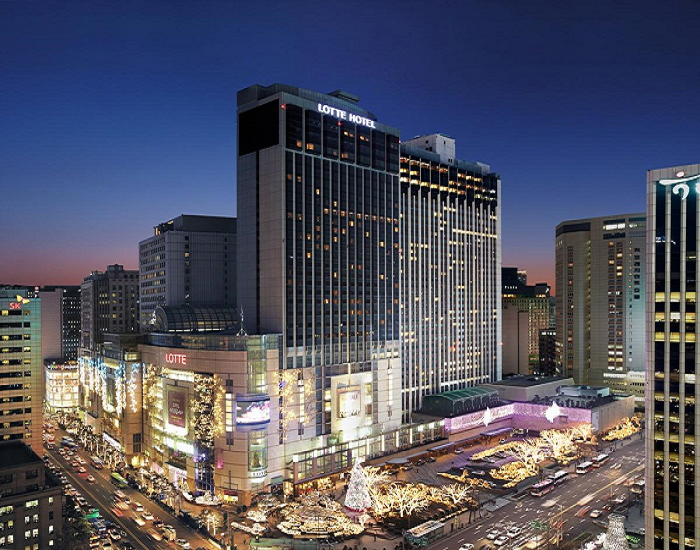
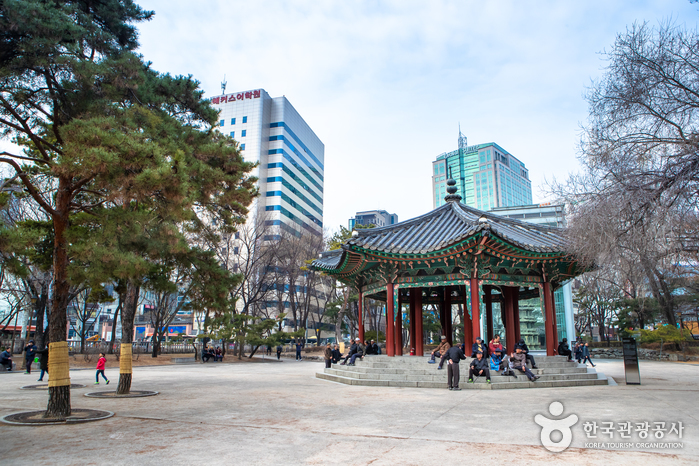
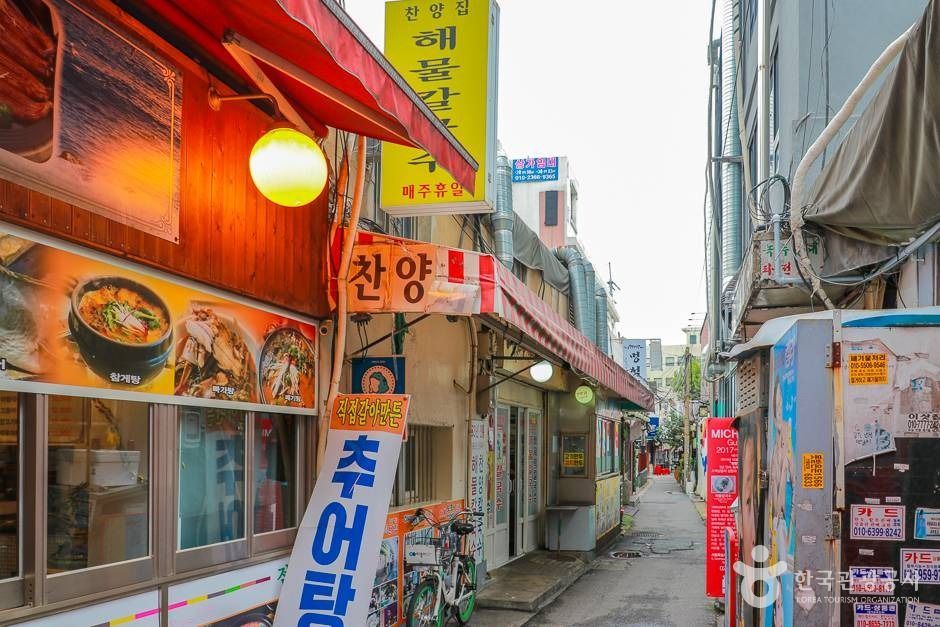
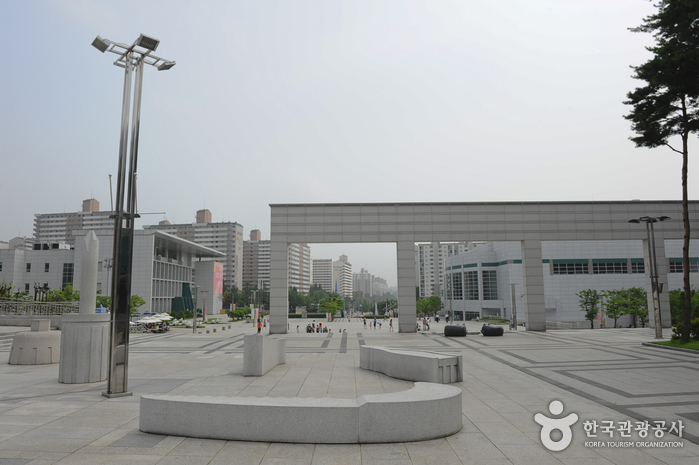
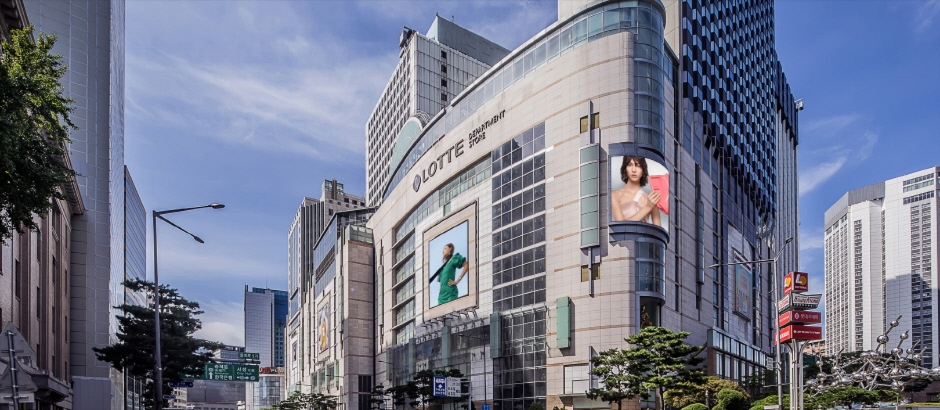
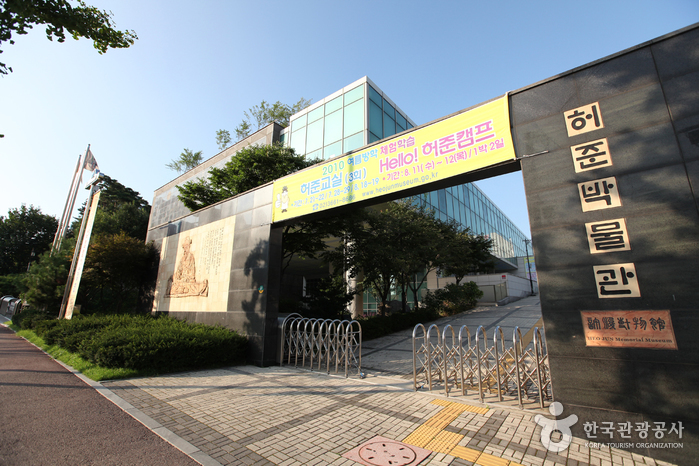
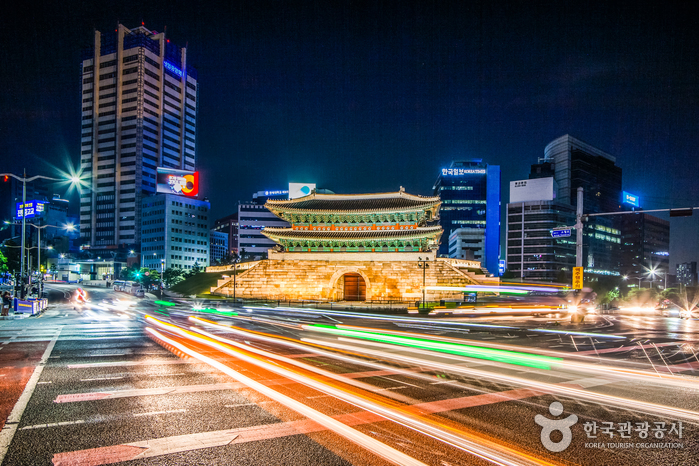
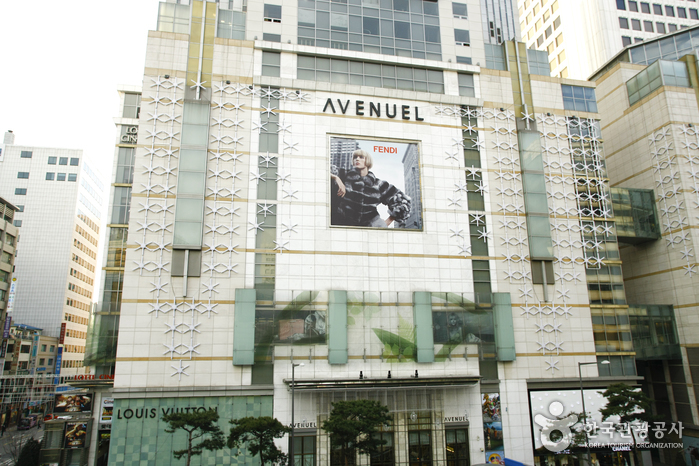
 Español
Español
 한국어
한국어 English
English 日本語
日本語 中文(简体)
中文(简体) Deutsch
Deutsch Français
Français Русский
Русский